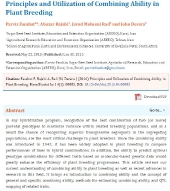




William Schlegel wrote:This question Joseph posed. I think we can generalize it a little bit. To "have we previously accidentally produced any promiscuous lines".
So ultimately I think from my experience an accidental promiscuous line seems unlikely. Though possible.
Nothing ruins a neighborhood like paved roads and water lines.
 1
1




Western Montana gardener and botanist in zone 6a according to 2012 zone update.
Gardening on lakebed sediments with 7 inch silty clay loam topsoil, 7 inch clay accumulation layer underneath, have added sand in places.

 1
1





 2
2







 2
2






 2
2





 3
3










 2
2





 3
3





 1
1




Gardening in Montreal (indoors, urban, 6b) and the Laurentians (sandy to sandy loam, boreal forest, 4a)
 4
4





 3
3









 2
2




 2
2




Jeremiah Squingelli wrote:I'm interested in getting a pack of these this year, but I'm just a seed saver and not a professional breeder or anything. As much as I'm thinking about the wildling, should I consider the Q-series instead? I'm here in central florida and between the heat, humidity, rampant disease, and invasive insects it can be hard to get much of anything to last very long here, if that makes a difference.
Western Montana gardener and botanist in zone 6a according to 2012 zone update.
Gardening on lakebed sediments with 7 inch silty clay loam topsoil, 7 inch clay accumulation layer underneath, have added sand in places.

 2
2





 1
1







 1
1





 1
1





 3
3




Gardening in Montreal (indoors, urban, 6b) and the Laurentians (sandy to sandy loam, boreal forest, 4a)
 2
2




Patrick Marchand wrote:I purchased Joseph's wildling tomato

 1
1








 3
3




Western Montana gardener and botanist in zone 6a according to 2012 zone update.
Gardening on lakebed sediments with 7 inch silty clay loam topsoil, 7 inch clay accumulation layer underneath, have added sand in places.




William Schlegel wrote:Anthocyanin pigment is a plant sunscreen. It might help certain wild tomato species or populations live in harsh environments.




Western Montana gardener and botanist in zone 6a according to 2012 zone update.
Gardening on lakebed sediments with 7 inch silty clay loam topsoil, 7 inch clay accumulation layer underneath, have added sand in places.
 1
1





| I agree. Here's the link: http://stoves2.com |









